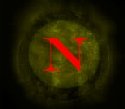 It’s not a Goya, a Rembrandt, a Da Vinci or even Monet or Van Gogh. The correct answer is No. 5, 1948 and if you were playing the game show Jeopardy on television, which is one of my favorite shows, the question would be, “What is the world’s most expensive painting?” The painting, which looks like a bunch of drips on a canvas, was reportedly sold for $140 in a private deal brokered by Sotheby’s. According to published reports previous owner and entertainment mogul David Geffen sold the painting to Mexican financier David Martinez in November of 2006. So who exactly is Jackson Pollock?
It’s not a Goya, a Rembrandt, a Da Vinci or even Monet or Van Gogh. The correct answer is No. 5, 1948 and if you were playing the game show Jeopardy on television, which is one of my favorite shows, the question would be, “What is the world’s most expensive painting?” The painting, which looks like a bunch of drips on a canvas, was reportedly sold for $140 in a private deal brokered by Sotheby’s. According to published reports previous owner and entertainment mogul David Geffen sold the painting to Mexican financier David Martinez in November of 2006. So who exactly is Jackson Pollock?Jackson Pollock who was born in Cody, Wyoming in 1912 was an abstract impressionist painter that some experts consider one of the most influential painters of the 20th Century. Pollock was married to Lee Krasner, herself a painter, and they moved New York in 1945. Their house in Long Island had a large barn on the premises that they turned into a studio. Soon after, Pollock started laying his canvases on the barn floor and began perfecting his “drip” technique. He experimented and tried many ways of dripping paint onto the canvas including using syringes, wooden sticks and just plain old pouring out of the can.
He numbered his paintings as opposed to naming them because he wanted people to use their imaginations as to what they saw and not be influenced by the artist interpretations. Some people have read too much into his art and have come to a decision that on some plain, Pollock used “mathematical” skills to build his paintings with “fractals,” whatever that means. It has been reported that Pollock was an alcoholic and looking at his paintings, I believe that the artist was just a little drunk, inspired and had fun. It is said the Pollock was influenced by sand paintings done by Native American people as well as David Alfaro Siqueiros, a Mexican muralist. Sadly, Pollock was killed in a single car crash in New York in 1956.







































